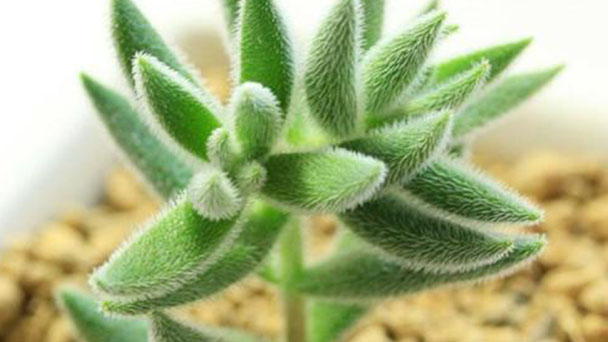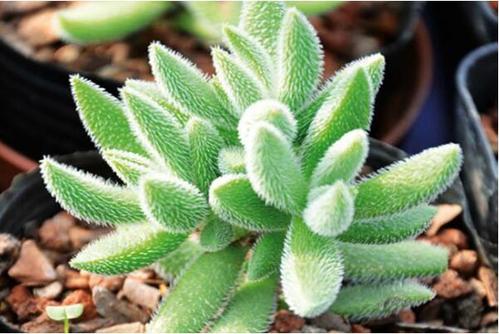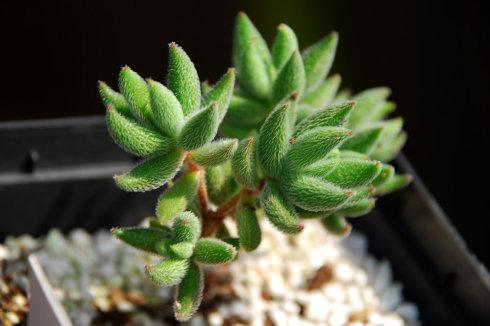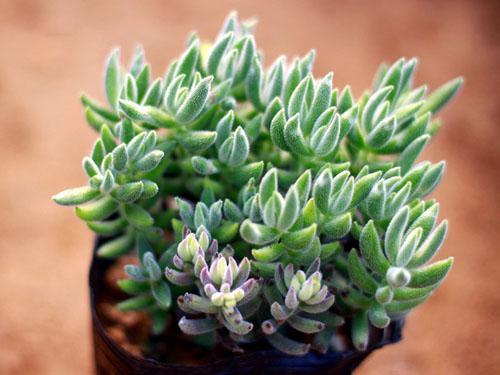Crassula mesembryanthoides diseases & controlling methods
Written by Maggie
Mar 16 2021

Crassula Mesembryanthoides is prone to black rot when they are farmed, spreading from the bottom of the leaves to the stalks. At this point we need to strengthen ventilation management, spraying carbendazem agents. If the plant has water rust, lower the temperature and trim the diseased leaves. If Crassula Mesembryanthoides has powdery mildew, the liquor is diluted with water about 1,000 times and sprayed onto the plants. Spraying it every 3 to 6 days can effectively treat Crassula Mesembryanthoides.

1. Black rot of Crassula Mesembryanthoides
Black rot is a common disease in Crassula Mesembryanthoides. When diseased, the leaves at the bottom become black and begin to spread to the stem. It is most common during the summer heat season. Ventilation management should be strengthened, and the blackened leaves should be removed and the carbendazim should be sprayed.
2. Water rust of Crassula Mesembryanthoides
When Crassula Mesembryanthoides suffers from water rust, the leaves gradually turn yellow, as if they were rusting. If not timely treatment, plants will gradually wither. In the daily breeding process, good ventilation management should be maintained, temperature should be lowered, yellow leaves should be pruned, and soil quality should be replaced for conservation.

3. Powdery mildew of Crassula Mesembryanthoides
Crassula mesembryanthoides are also prone to powdery mildness in farming. It is mainly needle leaf and tender stem, etc., and the disease will form spots in the early stage, and produce hundreds of powder spots in the later stage. At this point it can be diluted liquor with water 1000 times or so, after every 3 ~ 6 days of time spraying on the plant, which can effectively treat powdery mildew.
4. Root rot of Crassula Mesembryanthoides
When you water Crassula mesembryanthoides too much, it's easy to get root rot. The root system gradually decays, which affects the absorption of nutrients. If not treated in a timely manner, the plant will wither and die. At this point, the root system should be dug out, and the rotten part should be pruned. After being put into the basin, the root system should be irrigated with carbendazine for disinfection and sterilization.

Latest Updated
- Benefits of Bugleweed - 7 Science-backed Health Benefits
- Bugleweed Dangers & Side Effects - Is It Poisonous?
- How to Plant Evergreen Trees - What You Should Know
- When to Plant Evergreens - Grow Guide for Evergreen Trees
- 12 Wonderful Evergreen Shrubs for Your Garden
- 12 Popular Evergreen Plants with Pictures for Beginners
- When And How To Prune A Lilac Bush Like a Pro
- How to Grow & Care for Lilac Vine (Hardenbergia Violacea)
- Japanese Lilac Tree (Syringa Reticulata) Care & Propagation Guide
- Shumard Oak Pros and Cons - What to Know
Popular Articles
- Winter maintenance of Antirrhinum Majus
- How to Grow Terminalia Mantaly Tree
- How to Grow and Care for Crossostephium Chinense
- How to grow Antirrhinum Majus in spring
- Peristeria Elata (Dove Orchid) Profile: Info & Care Guide
- Underwatered Snake Plant (Sansevieria Trifasciata) - Signs And How To Fix
- How to Care for Brazilian Jasmine Plant (Mandevilla Sanderi)
- How to Grow & Care for Graptopetalum Purple Delight in Summer
- Rosa Chinensis (China Rose): Plant Growing & Care Tips
- How to Care for Baby Sun Rose (Aptenia Cordifolia)